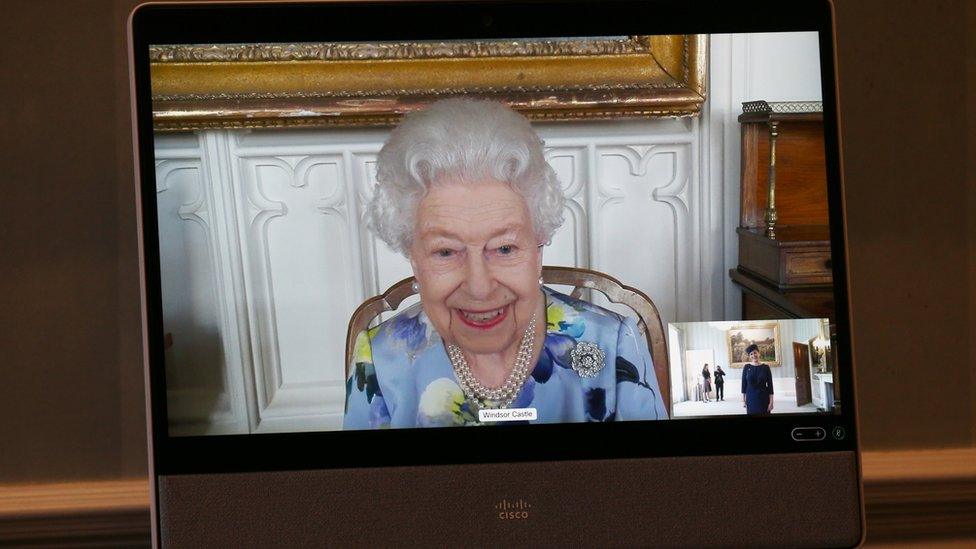Queen carries out first major royal duty since Philip's death
- Published
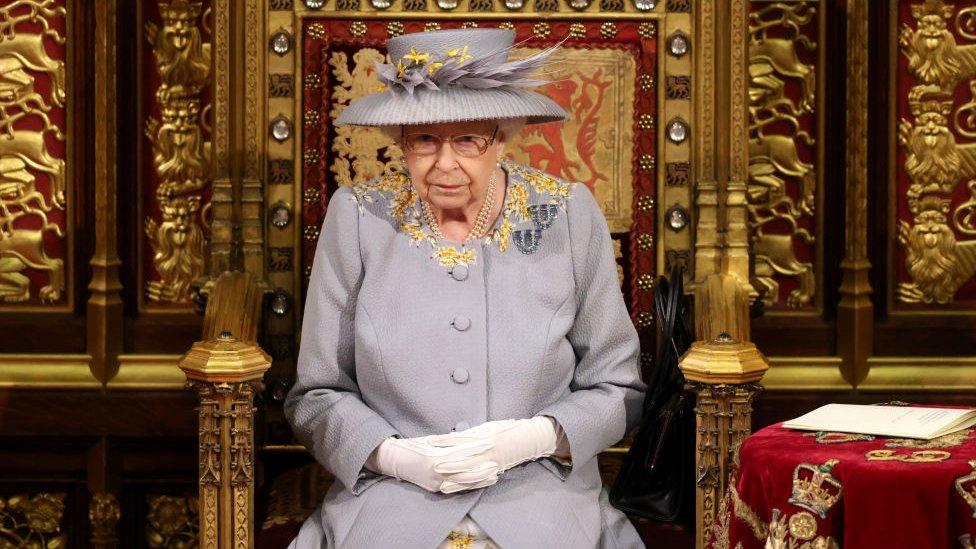
The Queen has carried out her first major public engagement since the death the Duke of Edinburgh, as she attended the State Opening of Parliament.
Prince Philip spent decades accompanying the monarch to the event.
This year's ceremony was pared back because of the pandemic.
It was the monarch's first official appearance in public in her role as head of state and her first engagement outside Windsor Castle since the death of her husband on 9 April, aged 99.
However, the Queen, 95, has been continuing her official duties, including taking part in virtual events, since a two-week period of royal mourning ended.
The Prince of Wales and the Duchess of Cornwall joined the Queen for the state opening, during which the monarch marked the beginning of the parliamentary session by delivering the Queen's Speech, which set out the government's legislative plans.
Charles has been at his mother's side for the last three occasions - in December 2019, October 2019 and Jun 2017 - after his father Philip fell ill with an infection, two months before he retired from public duties.
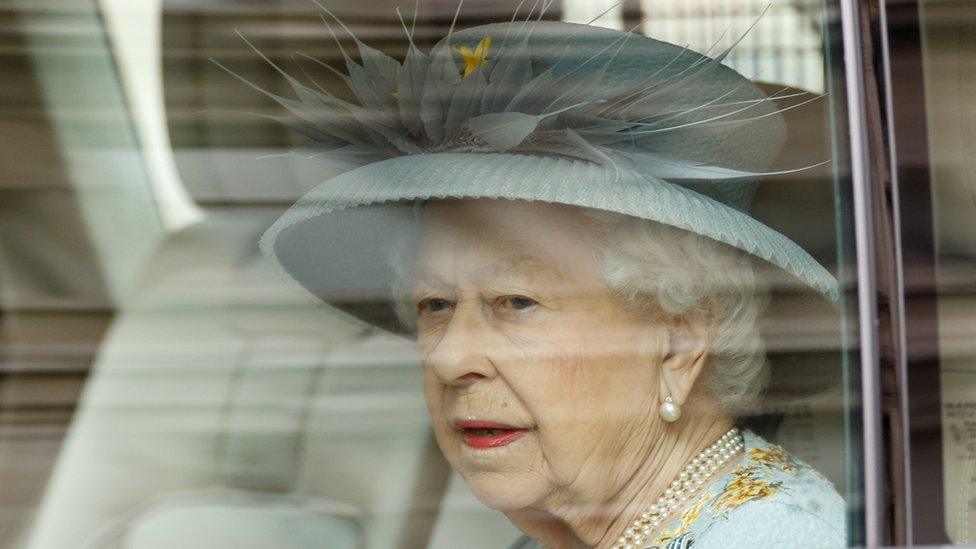
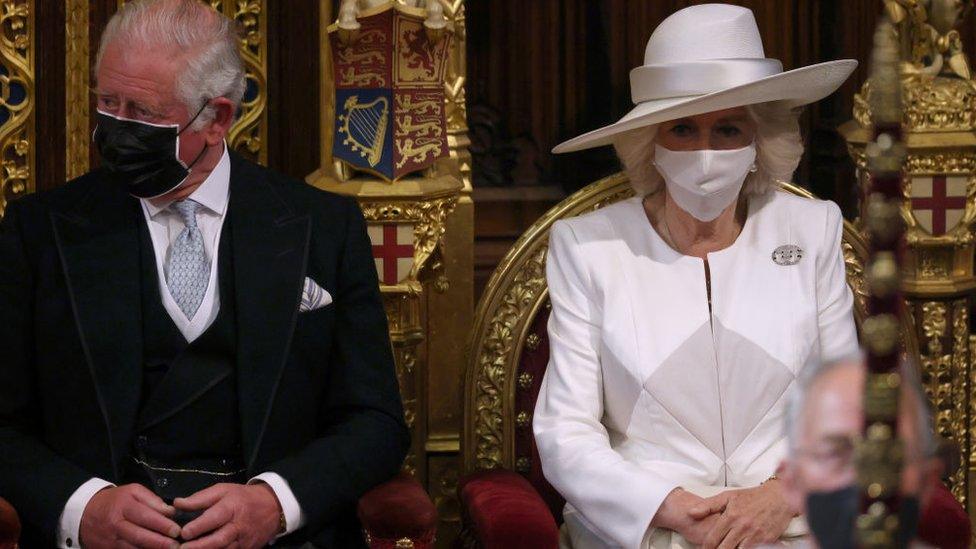
Charles and Camilla also attended the ceremony
The event is usually known for its pomp and pageantry but was scaled back this year because of the pandemic.
The Queen, in day dress and hat, travelled from Buckingham Palace to the Palace of Westminster in a car, rather than by carriage.
MPs and members of the House of Lords were required to wear masks throughout unless they were exempt, and everyone present took a Covid test beforehand.
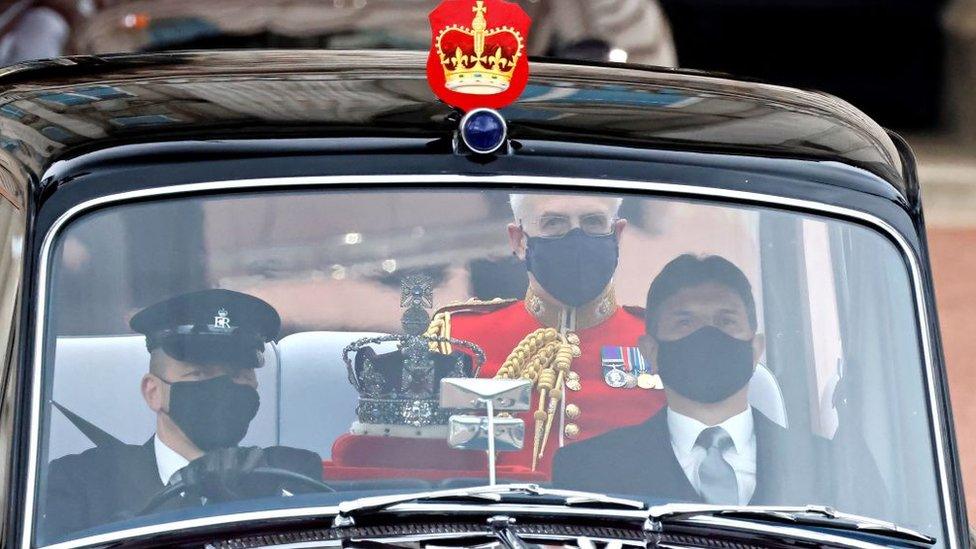
The Imperial State Crown was driven to Parliament ahead of the Queen's arrival
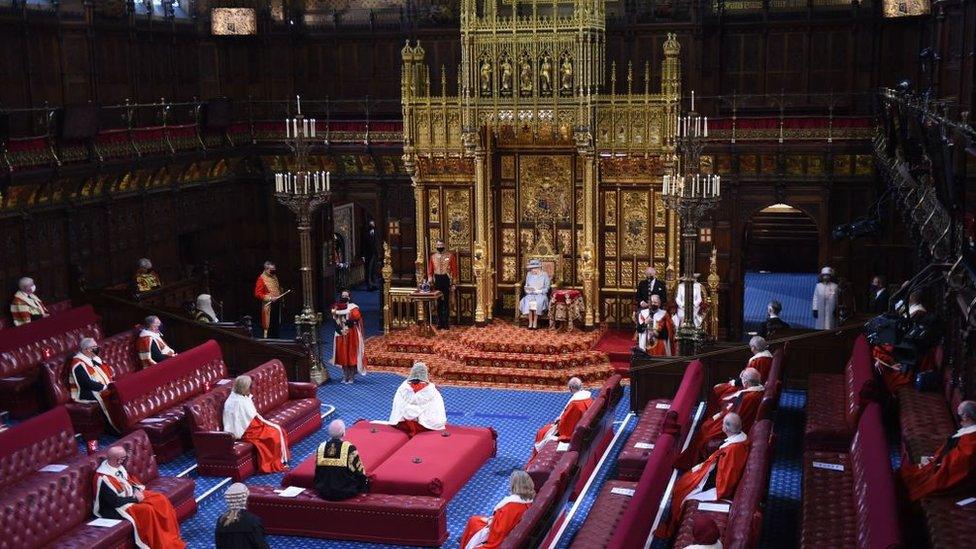
Those who attended were socially distanced in the chamber
No diplomatic or non-parliamentary guests were invited, with just 108 people attending, rather than up to 600 as is the norm.
Fewer politicians and peers attended, with only 74 people in the chamber, including the Queen, Prince Charles, Camilla, Speaker Sir Lindsay Hoyle, Prime Minister Boris Johnson and Labour leader Sir Keir Starmer, representatives from the House of Lords and House of Commons and those involved in the ceremonial procession.
There were 17 members of the Lords and 17 MPs in the Royal Gallery.
In another amendment, the Lord Chancellor Robert Buckland did not hand the speech directly to the Queen as is usually the custom, but placed it on a table instead.
There were also no military street liners or lining of the sovereign's staircase. There was no military band or Guard of Honour outside the Palace of Westminster or as part of the procession from Buckingham Palace.
However, the ancient tradition of the Black Rod still took place.
This tradition saw the doors of the Commons shut in the face of Sarah Clarke, Lady Usher of the Black Rod, as she arrived to summon MPs. She then had to strike the door three times before it is opened, symbolising the Commons' independence from the monarchy.
The Queen did not wear the heavy Imperial State Crown, which was instead carried on a cushion and placed on a table nearby as it was in 2019.
The monarch last wore the crown, which is made of more than 3,000 gemstones and weighs two pounds and 13 ounces, for the 2016 state opening.
Related topics
- Published17 July 2024
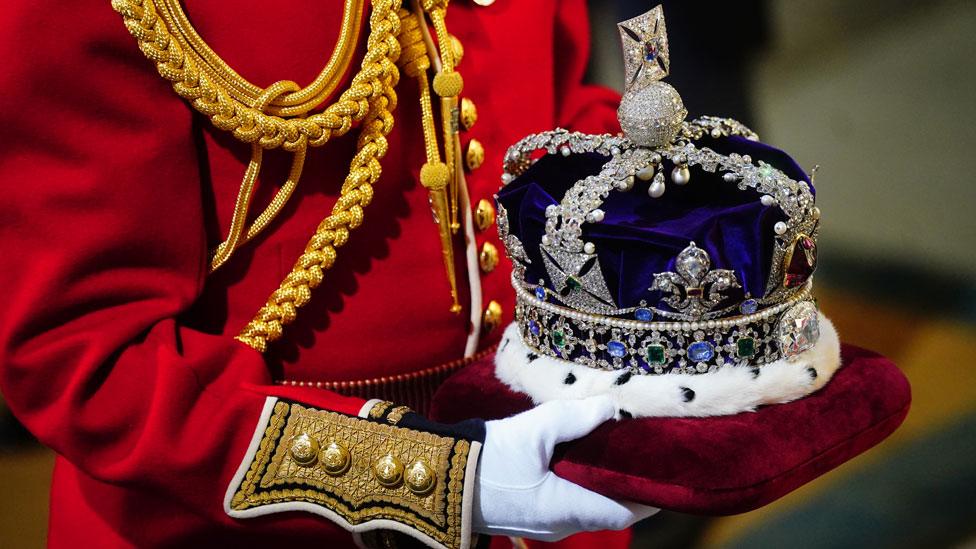
- Published11 May 2021
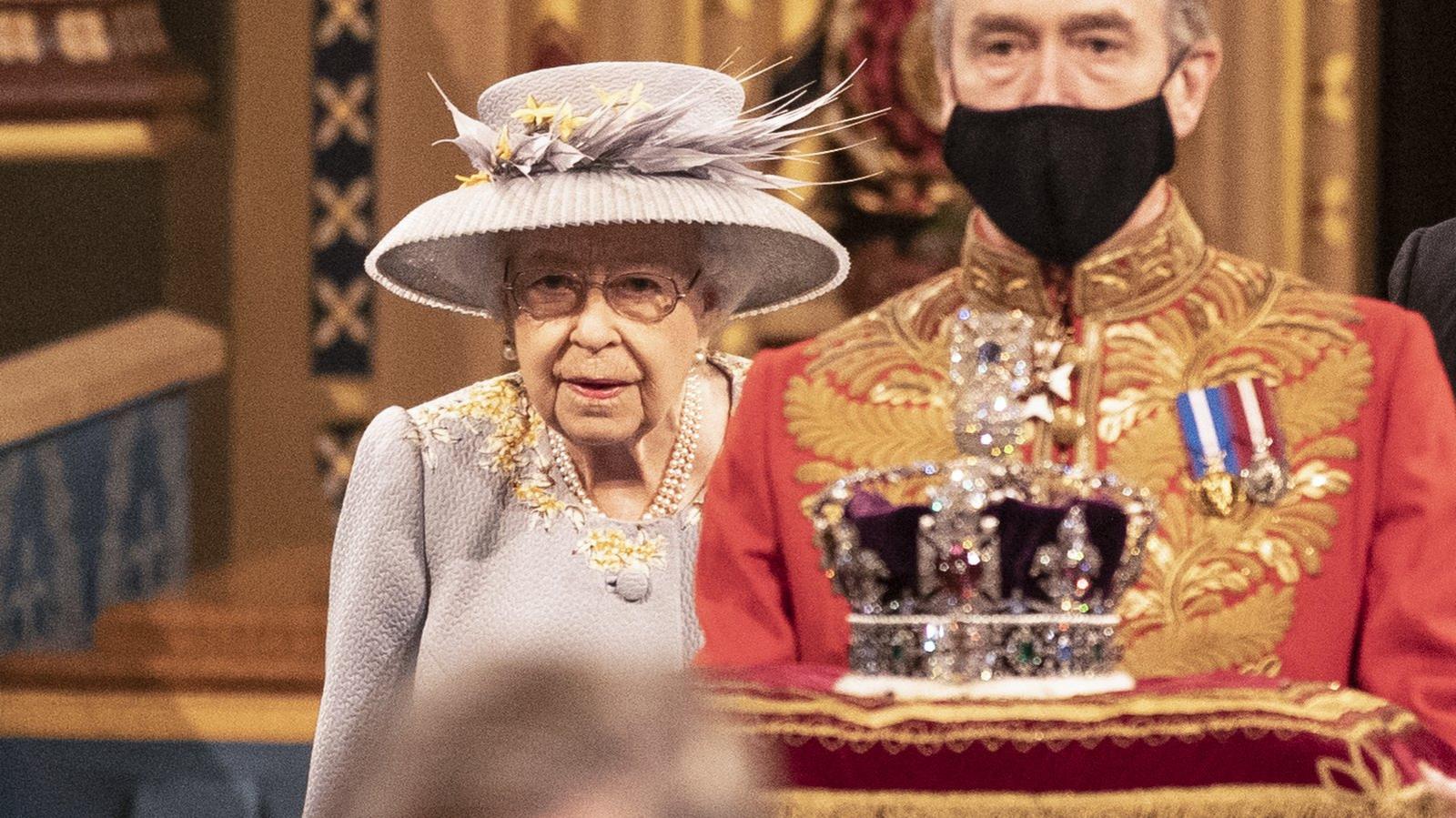
- Published11 May 2021
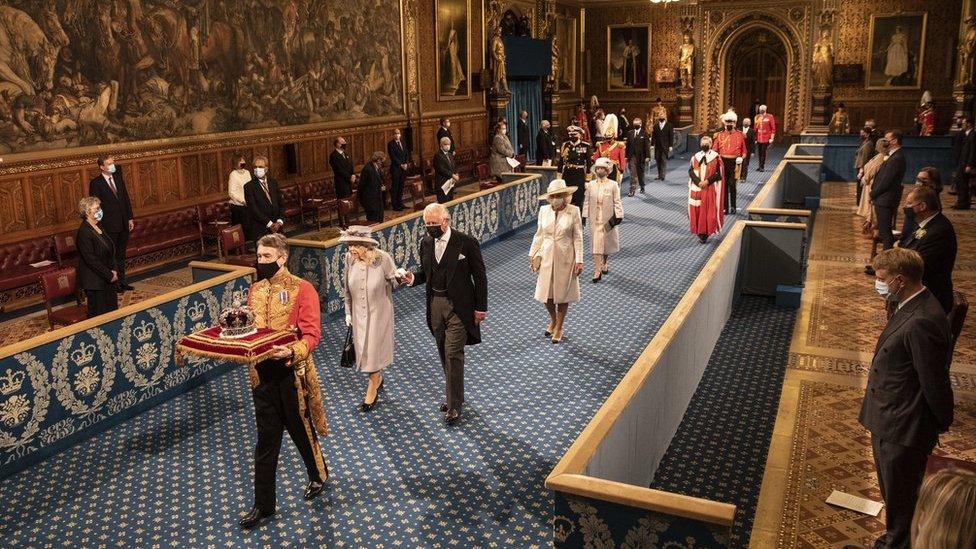
- Published27 April 2021
